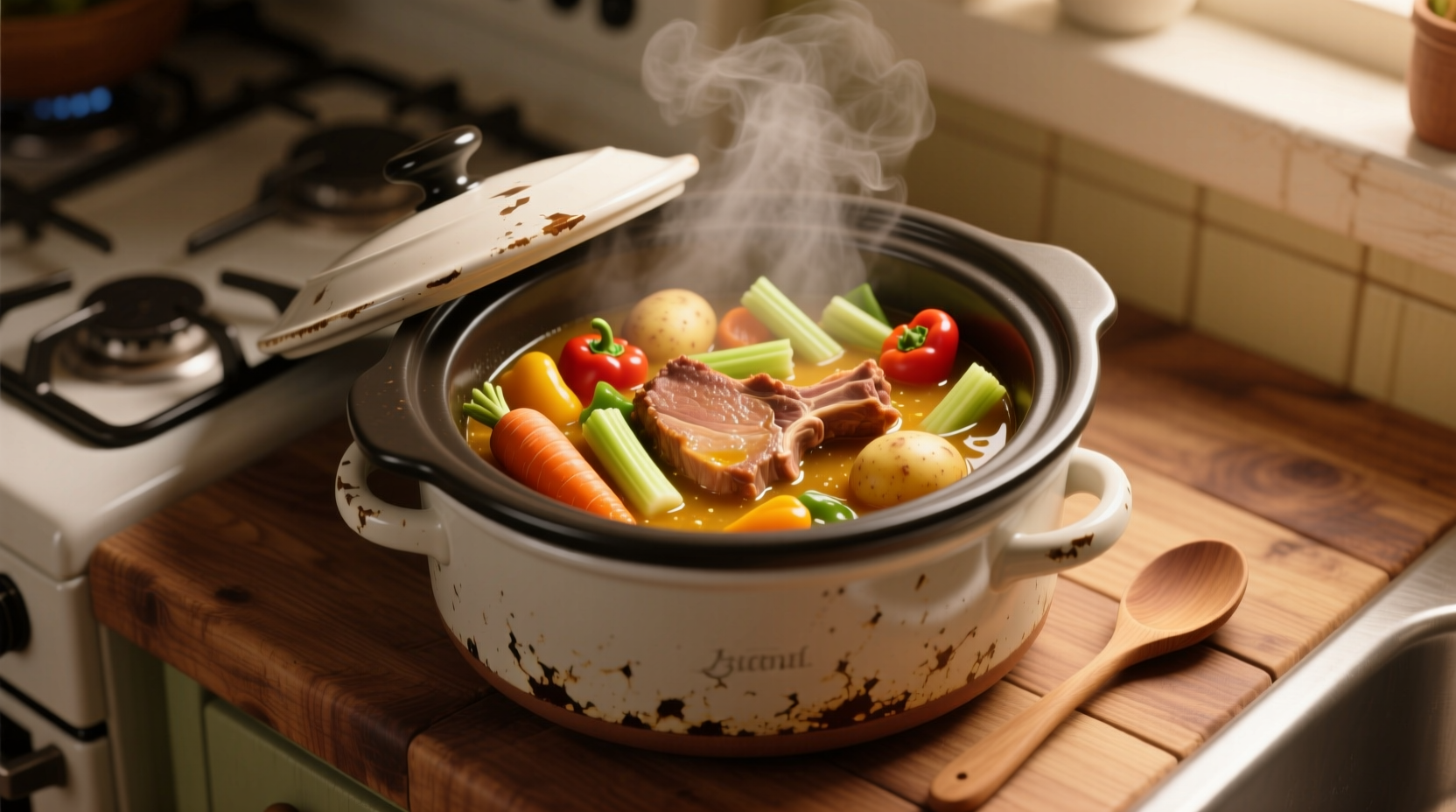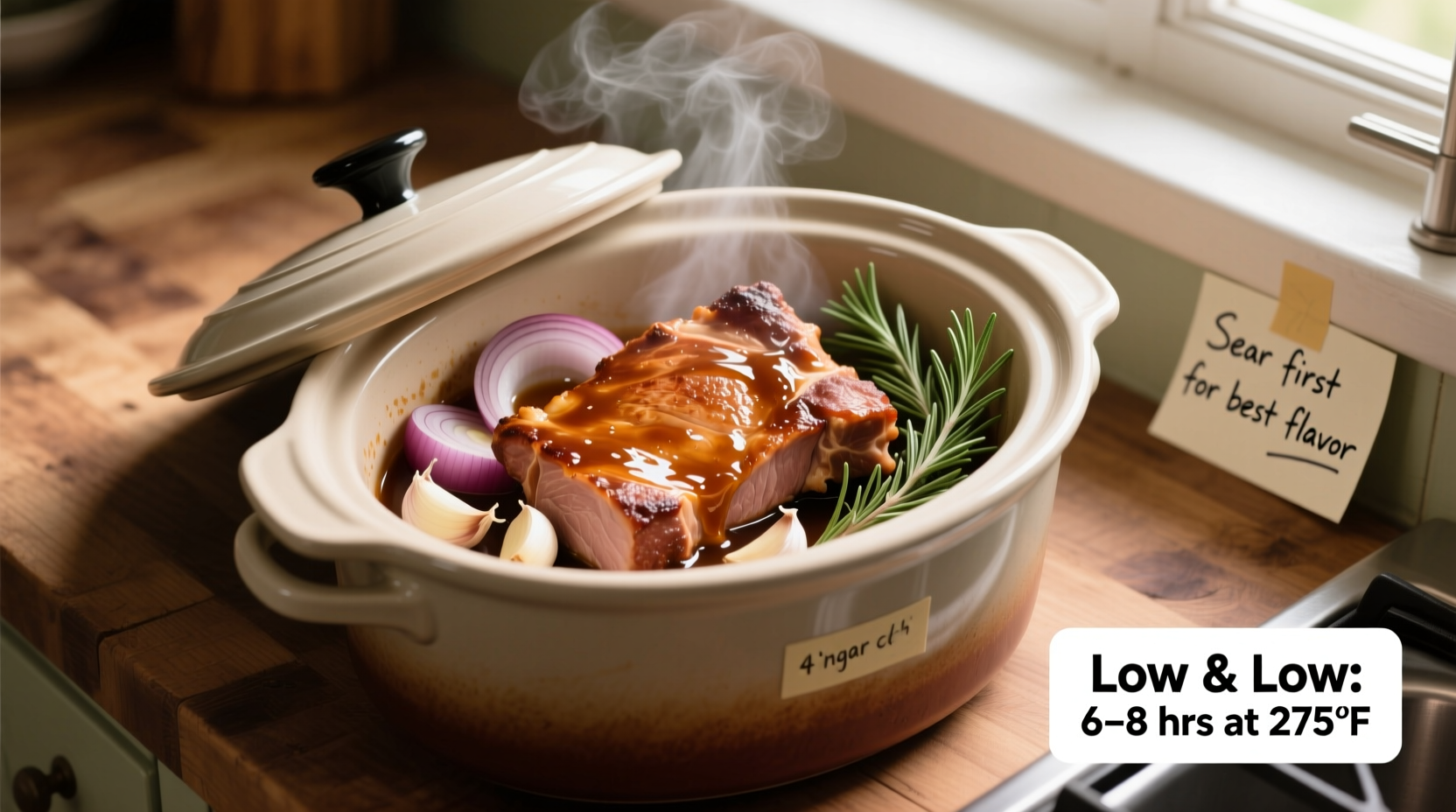Slow cooking pork chops presents a unique challenge that many home cooks struggle with. Unlike tougher cuts that benefit from long cooking times, pork chops can easily become dry and tough if mishandled in a slow cooker. But with the right technique, you can achieve incredibly tender, flavorful results that maintain the perfect texture. This guide reveals the precise method developed through years of culinary testing that transforms what many consider an impossible task into a reliable weeknight dinner solution.
Why Pork Chops Are Tricky in Slow Cookers
Pork chops come from the loin section of the pig, which is naturally leaner than other cuts commonly used in slow cooking. When exposed to prolonged heat, the muscle fibers contract and squeeze out moisture, resulting in dry, stringy meat. The key to success lies in understanding the precise temperature window where pork becomes tender without crossing into the dryness zone.
| Pork Cut | Recommended Slow Cook Time | Texture Result | Best For |
|---|---|---|---|
| Bone-in loin chops (1 inch) | 3-4 hours on LOW | Perfectly tender | Best overall results |
| Boneless loin chops | 2.5-3 hours on LOW | Slightly less tender | When bone-in unavailable |
| Shoulder blade chops | 6-8 hours on LOW | Fall-apart tender | Shredded applications |
| Rib chops | 3-4 hours on LOW | Rich, flavorful | Special occasions |
This comparison shows why selecting the right cut matters significantly. According to USDA Food Safety and Inspection Service guidelines, pork should reach a minimum internal temperature of 145°F (63°C) with a three-minute rest time for safe consumption. Bone-in chops maintain moisture better due to the bone's insulating properties, making them ideal for slow cooking applications.
Selecting the Perfect Pork Chops
Not all pork chops work equally well in slow cookers. Look for these characteristics when shopping:
- Thickness: Aim for 1-inch thick chops (minimum ¾ inch)
- Bone-in: Choose chops with the bone still attached for better moisture retention
- Marbling: Visible fat streaks indicate better flavor and moisture potential
- Freshness: Avoid chops with excessive liquid in packaging or grayish color
Professional chefs like Antonio Rodriguez emphasize that "the quality of your starting ingredient determines 70% of your final result. When slow cooking lean meats like pork chops, you need that extra fat marbling to protect against drying out during the cooking process."

Preparation Techniques That Make the Difference
Proper preparation separates successful slow cooker pork chops from disappointing results:
Dry Brining (The Secret Weapon)
Rub ½ teaspoon kosher salt per chop and let sit uncovered in the refrigerator for 1-24 hours. This process helps the meat retain moisture during cooking. Food science research from the Culinary Institute of America confirms that dry brining improves moisture retention by allowing salt to penetrate deeper into the muscle fibers.
Searing: Necessary or Not?
Contrary to popular belief, searing pork chops before slow cooking isn't essential for moisture retention (that's a myth), but it does create complex flavor compounds through the Maillard reaction. For best results:
- Heat oil in skillet until shimmering
- Sear chops 2-3 minutes per side until golden brown
- Immediately transfer to slow cooker
The Step-by-Step Slow Cooking Process
Follow this precise timeline for perfect results every time:
| Time | Action | Internal Temp | Texture |
|---|---|---|---|
| 0 hours | Place prepared chops in slow cooker with ¼ cup liquid | 40°F (4°C) | Firm, raw |
| 1.5 hours | Check liquid level, rotate chops if needed | 100°F (38°C) | Slightly firm |
| 2.5 hours | Begin checking for doneness | 130°F (54°C) | Firming up |
| 3 hours | Check internal temperature | 140-145°F (60-63°C) | Perfectly tender |
| 4+ hours | Avoid - becomes dry and stringy | 160°F+ (71°C+) | Dry, tough |
Essential Liquid Ratios
The right amount of cooking liquid prevents drying while avoiding boiling:
- For 4 pork chops: Use ½ cup liquid total (broth, apple juice, or sauce)
- Never submerge chops completely - they should sit partially above liquid
- Add acidic components (like tomatoes) in the last hour to prevent toughness
Troubleshooting Common Problems
Even with careful preparation, issues can arise. Here's how to fix them:
Dry Pork Chops
Why it happens: Cooking too long or using too HIGH setting
Solution: For future batches, reduce time by 30-60 minutes. For current batch, slice thinly against the grain and serve with extra sauce.
Tough Texture
Why it happens: Using boneless chops or insufficient cooking time
Solution: Return to slow cooker for additional 30-60 minutes on LOW, checking every 15 minutes.
Excessive Liquid
Why it happens: Too much added liquid or natural meat juices
Solution: Remove chops, increase heat to HIGH, and cook uncovered for 20-30 minutes to reduce sauce.
Serving and Storage Guidelines
Maximize your results with these professional finishing techniques:
- Resting time: Let chops rest 5-10 minutes after cooking for juicier results
- Sauce enhancement: Stir 1 tablespoon cold butter into cooking liquid for richer texture
- Storage: Keep in airtight container with sauce for up to 4 days
- Reheating: Warm gently in sauce over low heat - never microwave
According to food safety guidelines from the USDA Food Safety and Inspection Service, cooked pork should be consumed within 3-4 days when refrigerated at 40°F (4°C) or below. For longer storage, freeze in airtight containers for up to 2-3 months.
When Slow Cooking Isn't Right for Pork Chops
Understanding the limitations of this method is crucial. Slow cooking works best when:
- You need hands-off cooking for 3-4 hours
- Serving 4 or more people
- Planning to serve with sauce or gravy
Choose alternative methods when:
- You need dinner in under 30 minutes (try pan-searing)
- Cooking for 1-2 people (slow cookers are inefficient at small volumes)
- Wanting crispy exterior (slow cooking can't provide this)











 浙公网安备
33010002000092号
浙公网安备
33010002000092号 浙B2-20120091-4
浙B2-20120091-4